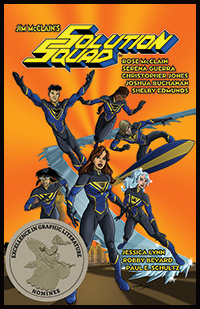Following the massive success of Star Wars, magazines were keen on remembering movies of times past that were similar in theme and genre. Science fiction was for a time no longer simply the milieu of nerds. One of the first such magazines was Science Fantasy Film Classics, which debuted with this issue:

Naturally, because Star Wars was on the cover, I asked my grandma to buy it for me, which she did. She loved how much I read about everything that interested me. But this particular magazine had something that caught my dad’s eye, too. It had a feature about Forbidden Planet, the 1956 science fiction version of Shakespeare’s The Tempest. He had seen Forbidden Planet when he was 12, so in a a way, it was very much his Star Wars. I had read the article, but didn’t think very much about it, because in 1978 there was no way to see a movie like Forbidden Planet unless it was shown on television, and 1956 movies were too old to be profitable in prime time. Cue the CBS Late Movie.
Back in those days, the CBS Late movie would come on following the news, up against Johnny Carson and The Tonight Show. They would fill a two-hour time slot with whatever content they had readily available. Reruns of McCloud back-to-back with another hour drama like Kojak, or MASH, followed by a 90-minute classic movie. So, imagine my surprise on Friday, January 6, when my dad roused me out of a deep sleep at midnight because, “JIMMER! FORBIDDEN PLANET IS ON!”
I was instantly awake. We had just talked about Forbidden Planet that week. Mind you, we were only able to watch it on our 9″ black and white TV, but it hardly mattered. As I watched the movie, enthralled, the C-57D floated through space similarly to the starship Enterprise. The links to the familiar didn’t end there. Here was Robby the Robot, whom I’d seen on Lost in Space. Chief Quinn was played by Richard Anderson, who I knew as Oscar Goldman. Police Woman’s Lt. Bill Crowley, Earl Holliman, was Cookie.

Forbidden Planet was like the best episode of Star Trek ever. The C-57D is dispatched to determine the fate of the Bellerophon, a scientific research vessel that had been sent to Altair IV 20 years before. There, they find one original survivor, Dr. Morbius, and his young daughter, Altaira. The rest of the Bellerophon crew is dead, including Altaira’s mother. Morbius, the lone survivor, is not happy to see the crew of the C-57D, and wants them to simply go away. He has been studying the lost civilization of a race called the Krell, who harnessed the powers of the mind to create incredible scientific advances. Morbius himself has been able to created incredible technologies like Robbie the Robot, who acts as servant, manufacturer, and protector to Morbius and his daughter. When the captain, played by a very straight Leslie Nielsen, inform him that they are required to investigate, Morbius tries resisting them at every turn. However, he is foiled by his daughter Altaira, who has grown up without peers on Altair IV. She is very interested in the captain and his crew, and therein, a very Kirklike struggle begins.
I love this movie, and the more I saw it over the course of years, finally in color, then in digital widescreen format, I loved it even more every time. I picked up the novelization at a yard sale years later, and, as I always did, I read it cover to cover, trying to glean every last bit of information from it.
Perhaps most importantly, though, my dad and I bonded over something that we now had in common, and even though I was up until 2 AM, I got my full night’s sleep, waking up late. But I was dreaming of Altair IV.


